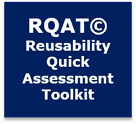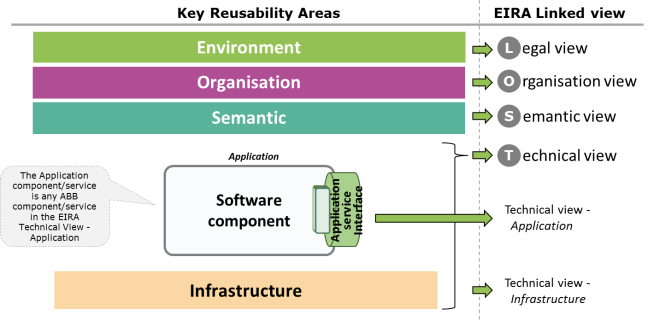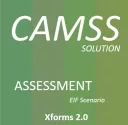
|
The Reusability Quick Assessment Toolkit (RQAT©) has been developed in the context of the Action “Assessment of Trans-European solutions supporting EU policies” of the ISA2 Programme |
The objective of the RQAT is to allow Solution Owners to assess the Potential Reusability of their software solutions supporting Public Services and it is based on explicitly differentiating between the reusability of Application Components and the consumption of Application Services.
The Reusability Quick Assessment Toolkit is based on the following Conceptual Model for the Reusability Quick Assessment of Application Components and Application Services:

This Reusability Conceptual Model comprises the following four Reusability Areas to be assessed through the toolkit:
- Environment: this area assesses the influence on reusability of the economic, political, legal environment where the organisation providing Application component/service is operating. It is mapped to EIRA’s Legal view.
- Organisation: this area assesses the influence on reusability of the organisation that developed and maintains an Application component/service. It is mapped to EIRA’s Organisation view.
- Semantic: this area assesses the influence on reusability of the semantic aspects of an Application component/service. It is mapped to EIRA’s Semantic view.
- Technical: this area assesses the influence on reusability of Application component/service in a vacuum (Technical-Application) as well as the influence on reusability of the infrastructure where an Application component/service is hosted when in operation (Technical-Infrastructure).
The Reusability Quick Assessment Toolkit comprises the following release components:
- Reusability Quick Assessment Tool (Excel File) to be used to calculate the solution’s Reusability Score;
- Guidelines for solution owners that guide solution owners on how to use the Excel tool and how to interpret the RES Score results.
The Reusability Quick Assessment Methodology has the aim to assess the Reusability of an Application component/service. This is expected to be followed by an Interoperability assessment using the Interoperability Quick Assessment Toolkit (IQAT©) for Application components/services found to be sufficiently reusable. Actually, RQAT and IQAT were designed to be aligned thus avoiding unnecessary repetition.

The expected benefits of the Reusability Quick Assessment Toolkit are the following:
- It spots areas for improving the reusability in a given solution
- It supports portfolio management decisions,
- by suggesting solutions that could be published in the European Interoperability Cartography (EIC)
- by clustering solutions with regard to Reusability Maturity
- by identifying solutions that should be improved in term of reusability
- It is applicable to any software solution (not only TES)
- It forms a first step before assessing the interoperability of an Application component/service.
- It supports end-users of the EIC in verifying the Overall Reusability score of any published solution.
Based on the automatically computed Reusability Assessment Score, the toolkit does not only provide a graphical radar chart but also a four stage reusability maturity level model for each of the aforementioned four reusability areas. It indicates the potential reusability maturity of a specific solution by providing a reference rate (from 0% to 100%).
Building on this maturity level of the specific solution, the Solution Owner can activate technical improvements aimed at increasing the potential reusability of the solution.




